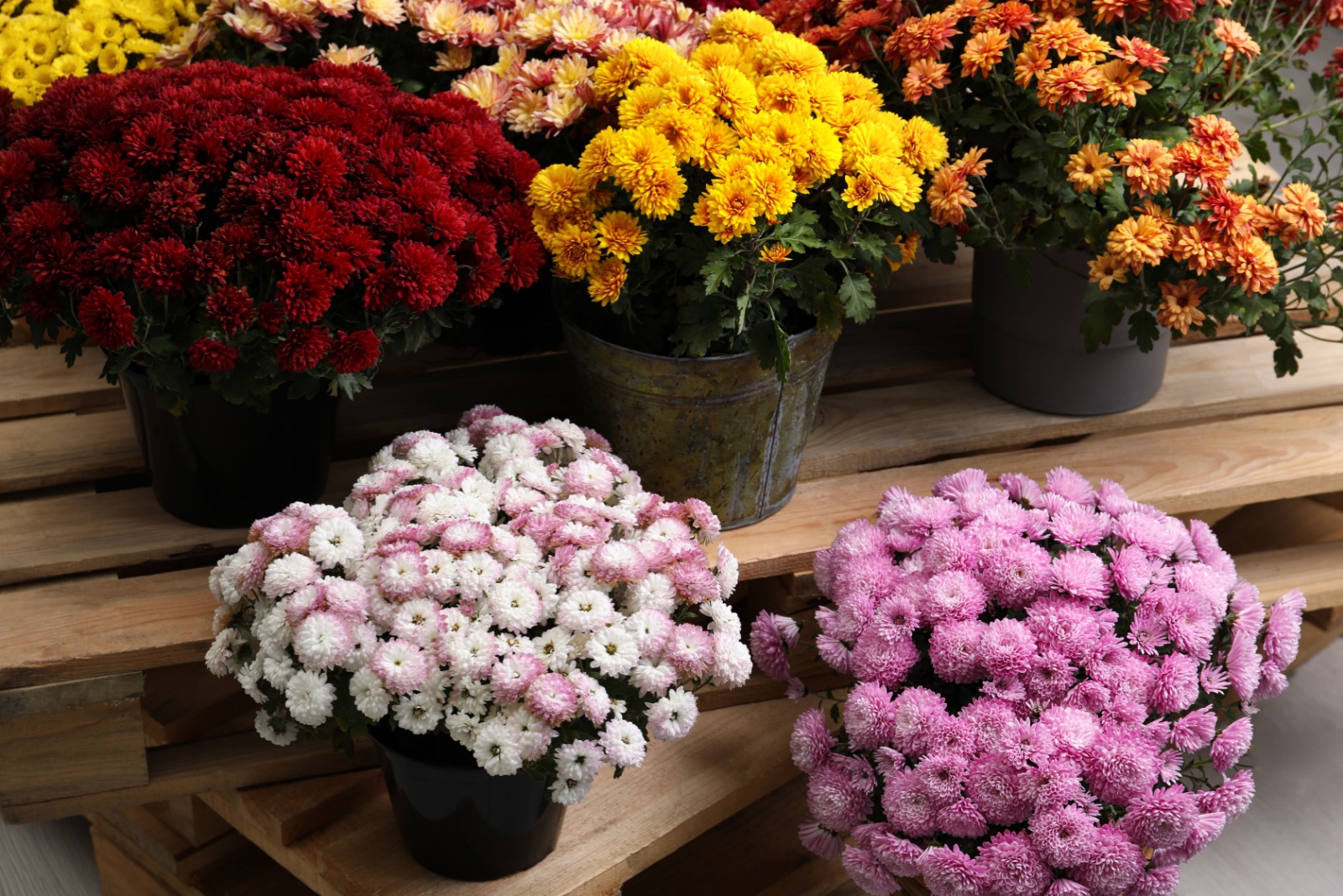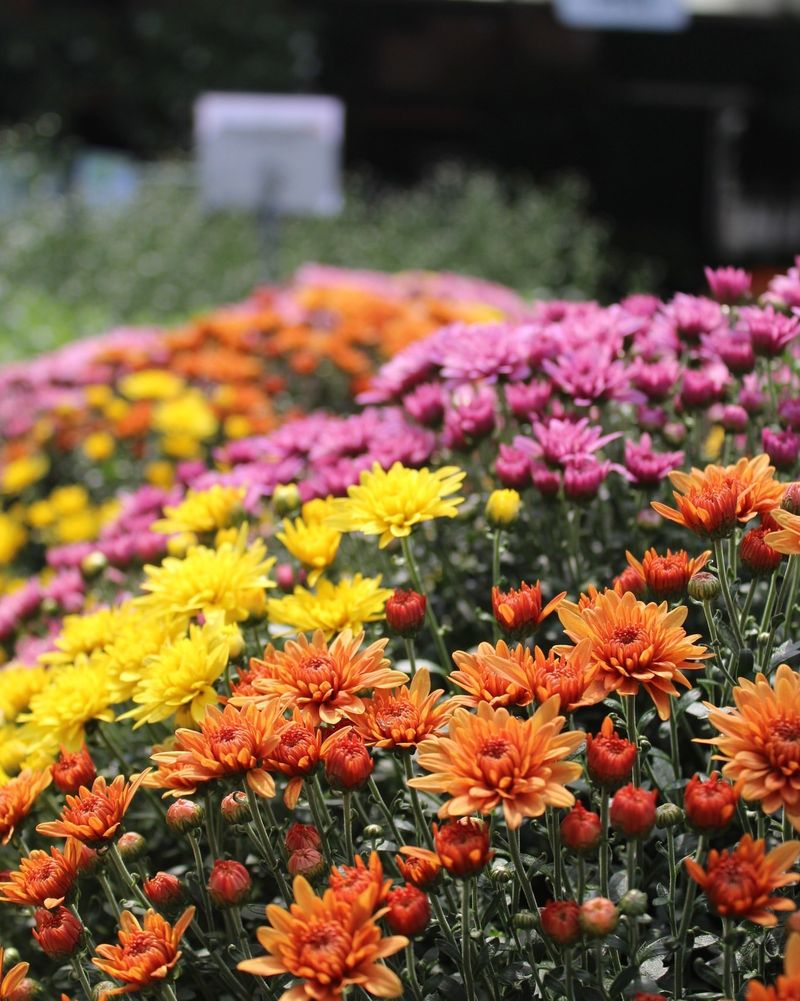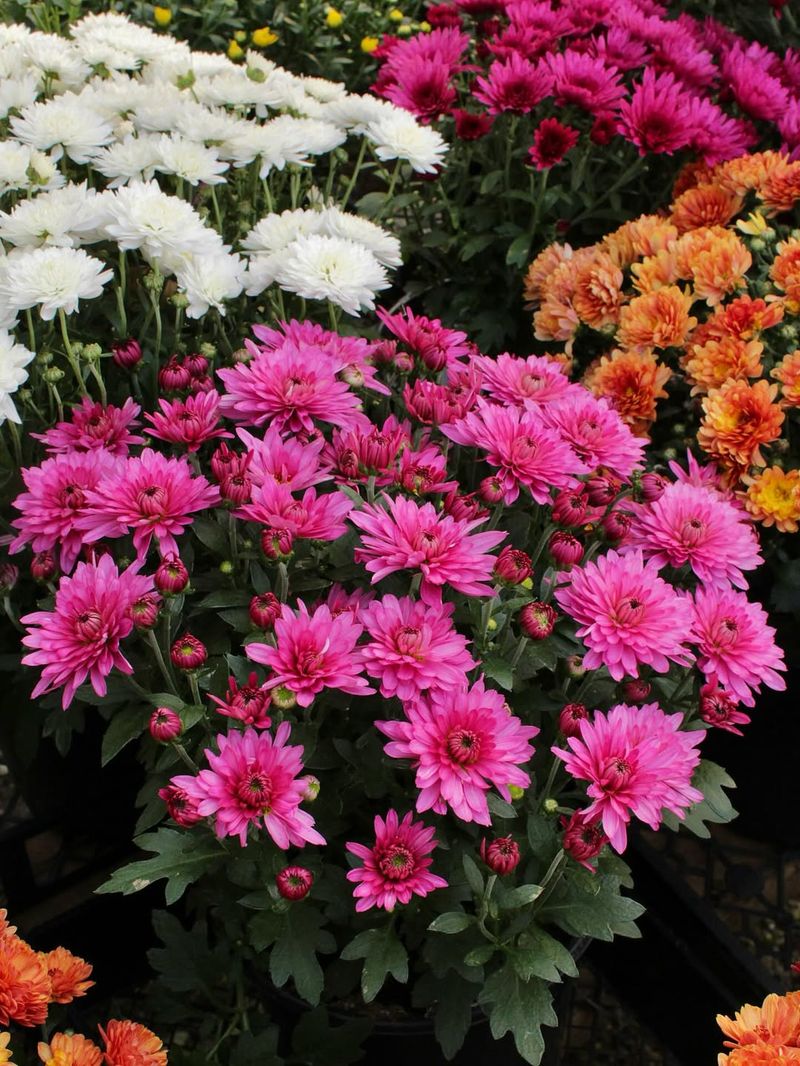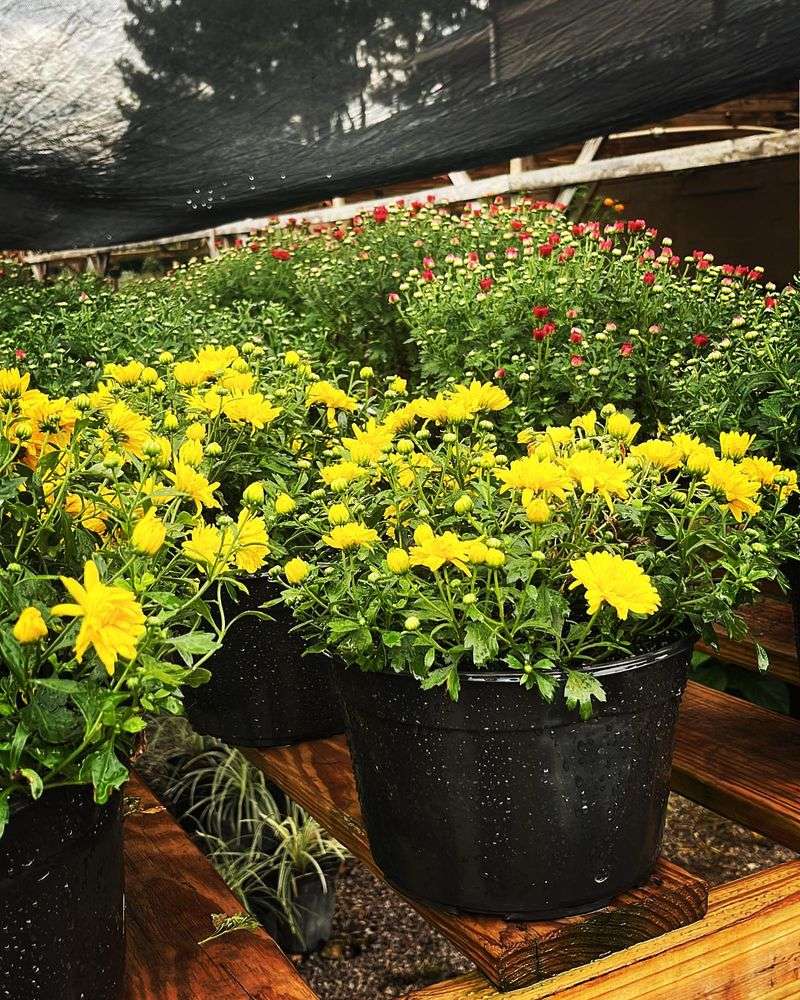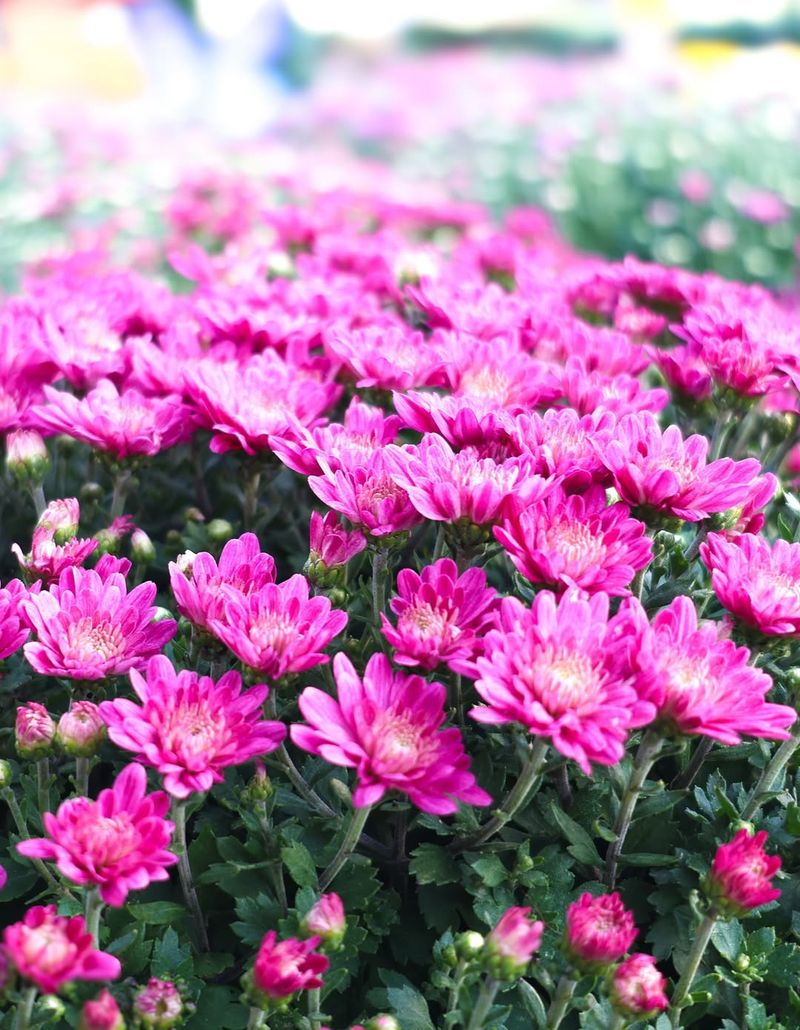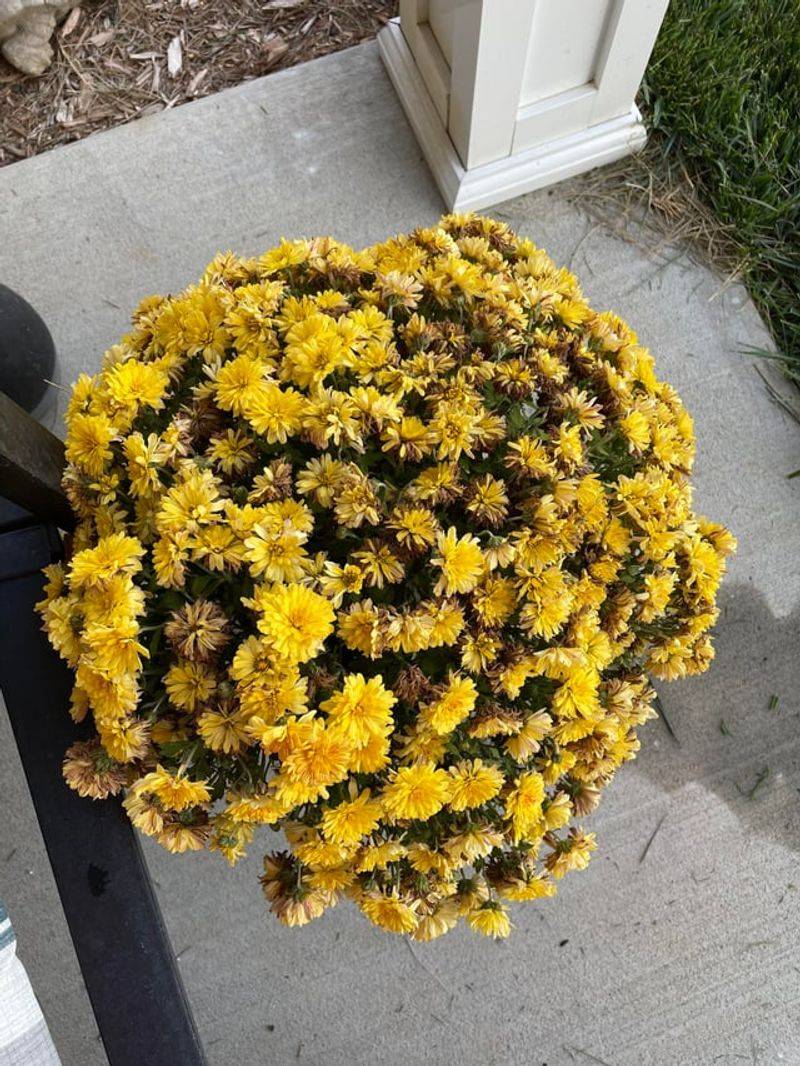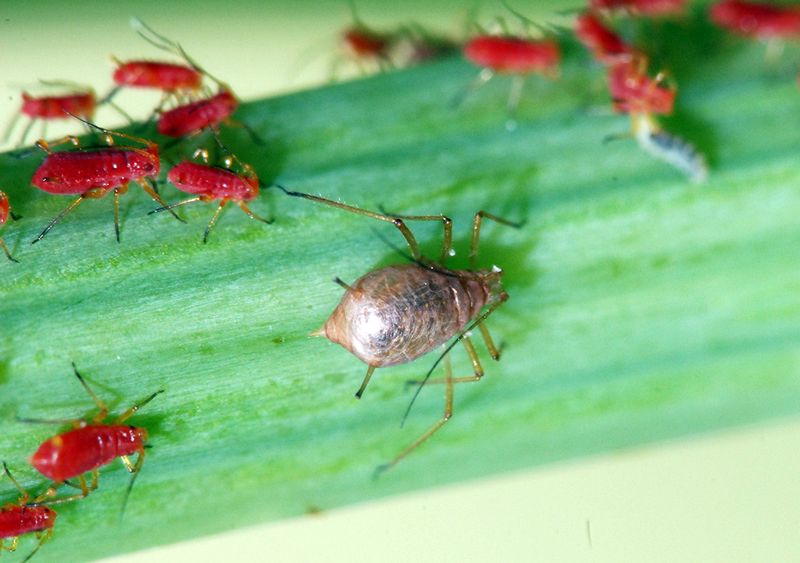Minnesota’s fall season brings cooler temperatures and shorter days, making it the perfect time to enjoy colorful mums in your garden. These hardy flowers can brighten up your yard throughout autumn if you know how to care for them properly.
With the right techniques, your mums will keep producing stunning blooms even as the weather gets chilly.
1. Water Deeply But Not Too Often
Mums need consistent moisture to keep their blooms looking fresh and vibrant. Check the soil with your finger before watering—if the top inch feels dry, it’s time to add water.
Pour water directly at the base of the plant rather than spraying the leaves and flowers. Morning watering works best because it gives plants time to dry before nightfall, preventing diseases that thrive in damp conditions.
2. Pick The Perfect Sunny Spot
Sunlight fuels your mums’ ability to create those gorgeous fall blooms you love. Position your plants where they’ll soak up at least six hours of direct sunlight each day.
Southern or western exposures typically provide the brightest light in Minnesota yards. If your mums start looking leggy or produce fewer flowers, they might be telling you they need more sun to perform their best.
3. Add A Layer Of Protective Mulch
Mulch acts like a cozy blanket for your mums’ roots, keeping soil temperatures stable during Minnesota’s unpredictable fall weather. Spread two to three inches of organic material like shredded bark or compost around each plant.
Keep the mulch a few inches away from the stems to prevent rot. This protective layer also helps the soil retain moisture and blocks weeds from stealing nutrients your mums need for blooming.
4. Deadhead Faded Flowers Regularly
Removing spent blooms might seem like extra work, but it encourages your mums to keep producing fresh flowers instead of making seeds. Simply pinch off wilted blossoms with your fingers or use clean scissors.
Aim to deadhead every few days for maximum results. Your plants will redirect their energy into creating new buds rather than wasting it on dying flowers, keeping your display colorful until the first hard freeze arrives.
5. Feed With Balanced Fertilizer
Well-fed mums produce more blooms and display richer colors throughout the fall season. Apply a balanced, water-soluble fertilizer every two weeks, following the package directions carefully to avoid overfeeding.
Look for formulas with equal amounts of nitrogen, phosphorus, and potassium. Stop fertilizing about four weeks before your area’s first expected frost date, giving plants time to prepare for winter dormancy rather than pushing out tender new growth.
6. Shield Plants From Early Frost
Minnesota’s autumn nights can turn surprisingly cold without warning, threatening your mums’ beautiful display. When forecasters predict temperatures below 32 degrees, cover your plants with old bedsheets, burlap, or frost blankets.
Remember to remove the covers once morning temperatures rise above freezing. Lightweight fabric works better than plastic because it allows air circulation while still trapping warmth around the flowers and foliage during chilly overnight hours.
7. Ensure Proper Drainage Always
Soggy soil spells disaster for mums, causing root rot that can kill plants quickly. Plant your mums in well-draining soil or add compost and sand to heavy clay if needed.
Container-grown mums must have drainage holes at the bottom to let excess water escape. After heavy rains, check that water isn’t pooling around your plants—standing water suffocates roots and creates perfect conditions for harmful fungi to take hold.
8. Monitor For Pests And Diseases
Aphids, spider mites, and powdery mildew can quickly ruin your mums’ appearance if left unchecked. Inspect your plants weekly, looking under leaves and around stems for signs of trouble.
Catching problems early makes treatment much easier and more effective. Remove affected leaves immediately, and use insecticidal soap or neem oil for pest control. Good air circulation between plants helps prevent many disease issues from developing in the first place.

